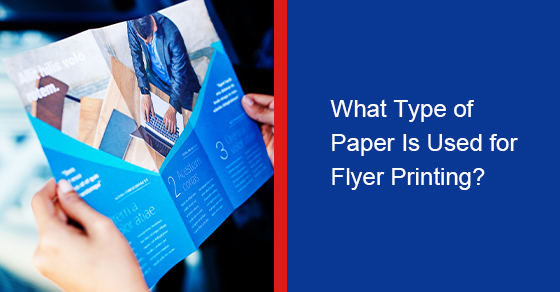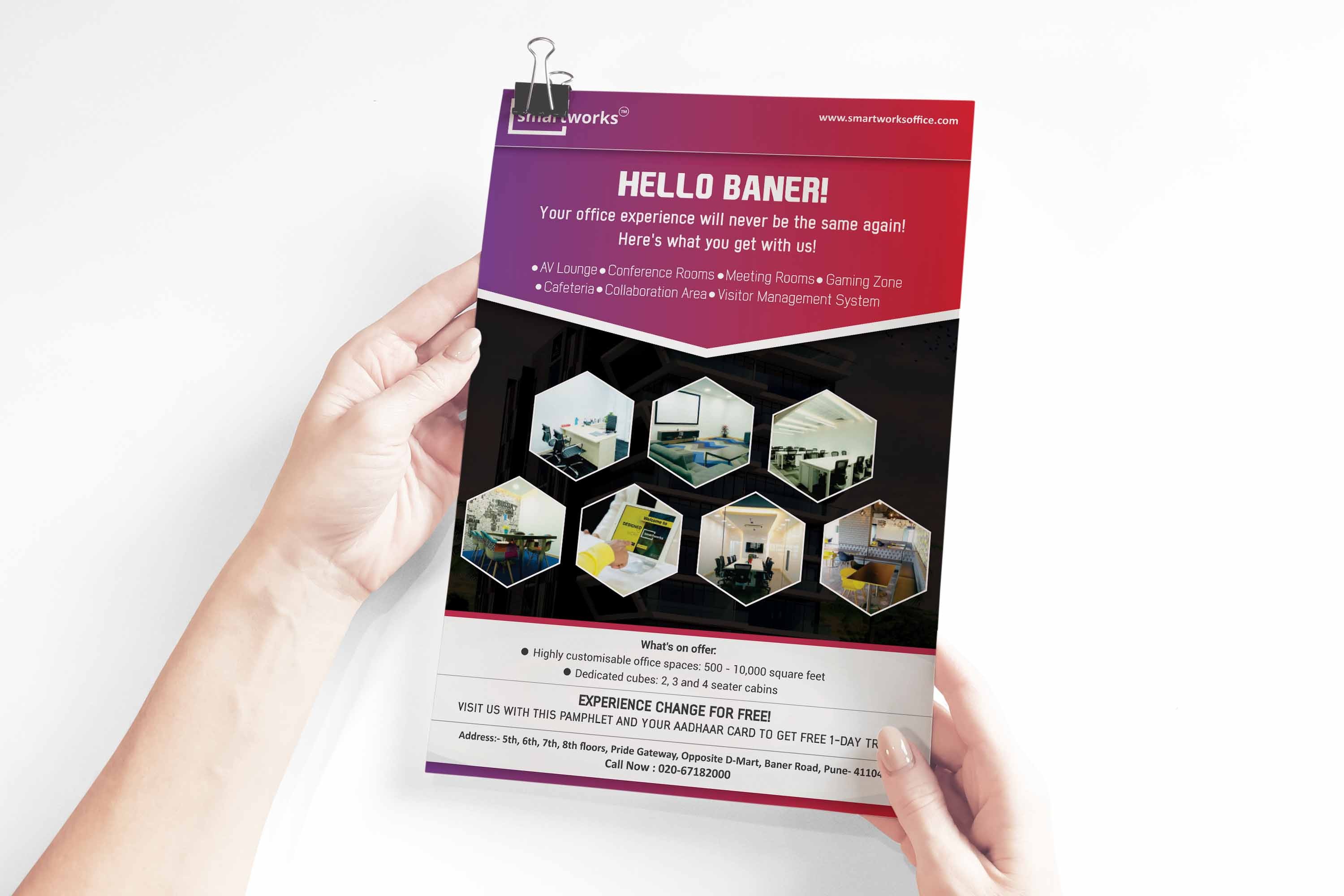Exploring the Different Design And Styles in Pamphlet Printing for Your Company Demands
Handout printing supplies a variety of designs and styles that can greatly influence a service's interaction strategies. From bi-folds to tri-folds, each format provides unique advantages for sharing messages. Recognizing layout components such as typography, layout, and shade is necessary. However, the effectiveness of these selections usually pivots on deeper understandings. What elements should be considered to guarantee a handout not just notifies however additionally engages its audience?
Comprehending Pamphlet Kind: A Comprehensive Review
Handouts may seem like easy marketing devices, they come in different kinds, each offering unique functions and target markets. One of the most typical types consist of bi-fold, tri-fold, and z-fold pamphlets. Bi-fold handouts include a single sheet folded up in half, making them perfect for straightforward messages or food selections. Tri-fold pamphlets, which are split right into three upright panels, are flexible and can suit in-depth information, making them preferred for marketing materials and event sales brochures. Z-fold pamphlets, identified by a zig-zag folding pattern, offer an unique design that can involve visitors with an aesthetic narrative. Additionally, some pamphlets may be designed for specific purposes, such as informational guides, product catalogs, or academic sources. Recognizing these kinds allows businesses to tailor their messaging properly, guaranteeing that their pamphlets reverberate with their target audience and accomplish their advertising goals.
The Value of Design Elements in Pamphlet Printing
Style components play an important function in the efficiency of handout printing. Key aspects such as color pattern, typography, and aesthetic pecking order greatly affect how details is viewed and retained by the audience. By carefully considering these elements, designers can enhance readability and involvement, ultimately achieving more clear interaction.

Color Schemes and Mixes
Shade mixes and systems play a critical function in the effectiveness of pamphlet printing, influencing both visual appeal and reader involvement. The option of colors can stimulate feelings, develop brand identification, and guide the reader's interest to crucial information. Unified shade palettes can improve visual cohesiveness, while contrasting shades can create focus and draw focus to important aspects. A cozy shade scheme might convey energy and excitement, while cooler tones can suggest expertise and peace. In addition, cultural undertones of shades must be thought about, as they can vary substantially across different demographics. Inevitably, a well-thought-out color pattern not just enhances the handout but likewise acts as a tactical device in connecting the designated message successfully.
Typography and Readability
Typography acts as a cornerstone of handout printing, significantly affecting readability and general message shipment. The choice of font styles, sizes, and designs contributes significantly to just how info is regarded by viewers. Clear, understandable typefaces improve understanding, while excessively ornamental typefaces might impede it. Moreover, the suitable font size guarantees that text is quickly understandable from numerous ranges, accommodating varied target markets. Line spacing and paragraph structure likewise play vital roles in directing the viewers's eye and promoting smooth navigating with the material. Consistent typography develops a cohesive appearance, reinforcing brand identification while making sure that essential details attracts attention. Ultimately, thoughtful typography options can raise a pamphlet's performance, guaranteeing that its intended message resonates with the target market
Aesthetic Hierarchy Value
Reliable handout printing depends upon the tactical use aesthetic power structure, which overviews readers with the web content in an instinctive way. By prioritizing style aspects such as color, dimension, and positioning, companies can efficiently accentuate vital messages and information. Larger fonts can stress headings, while contrasting colors can highlight important information. The setup of visuals alongside message also plays a vital duty in routing the reader's gaze, making certain that one of the most important information is soaked up initially. Furthermore, regular use spacing aids produce a clean layout that boosts readability. Inevitably, a well-planned visual power structure not only records interest but additionally promotes understanding, making the pamphlet an efficient tool for communication and engagement.
Picking the Right Format for Your Message
Picking the suitable style for a handout is vital to successfully share a message. Elements such as fold types, dimension considerations, and aesthetic appeal play significant roles in engaging the target market and enhancing readability. An appropriate format can transform an easy message into an engaging presentation.
Handout Fold Kind
When choosing on a pamphlet's fold kind, it is necessary to ponder exactly how the style will boost the message being conveyed. Numerous fold kinds serve different functions, impacting both visual appeals and functionality. One of the most usual options consist of the tri-fold, which uses six panels for information, making it optimal for thorough material. The bi-fold supplies 4 panels, enabling a much more simple, less messy presentation. For an innovative strategy, the Z-fold provides a zigzag design that records interest and can unravel right into a much longer narrative. Additionally, the gateway fold develops an appealing expose, ideal for showcasing key information. Inevitably, picking the right fold type assists in efficiently connecting the designated message while ensuring an appealing experience for the audience.
Dimension Considerations
The dimension of a pamphlet plays a substantial role in just how the message is gotten and comprehended. Selecting the best layout can affect not only the web content's readability however additionally the general effect on the target market. Usual sizes consist of letter-size (8.5 x 11 inches) for thorough information, and smaller styles like half-letter (5.5 x 8.5 inches) for succinct messages. A bigger pamphlet may permit for more visuals and thorough material, while a portable size can be much more practical for distribution. Additionally, the desired use the pamphlet-- whether for handouts, mailers, or display screen-- should assist the size selection. Ultimately, straightening the handout's measurements with the communication goals is important for reliable messaging.
Aesthetic Appeal
Visual allure is important in pamphlet design, as it directly affects audience engagement and message retention. The choice of style plays a pivotal duty in attaining this charm. Options such as tri-fold, find bi-fold, or brochure layouts can impact just how info is offered and regarded. A tri-fold handout, for instance, supplies a small design that urges simple handling and unfolding, while a bi-fold enables larger pictures and more comprehensive message. Including attractive graphics, a well balanced shade palette, and clear typography enhances visual interest. In addition, thoughtful design and spacing add to readability. Inevitably, choosing the ideal format straightens the handout's visual appeals with its designated message, ensuring that the target market not just notifications the pamphlet but also engages with its content successfully.
Color Psychology: Impact on Target Market Interaction
Recognizing color psychology is vital for reliable handout design, as shades stimulate details feelings and responses from audiences. Each shade has special organizations; as an example, blue typically shares trust and professionalism, making it appropriate for company pamphlets. Conversely, red can promote excitement and urgency, perfect for promos or events that need prompt attention.Green often represents growth and health, attracting ecologically conscious audiences. Yellow, related to positive outlook and creativity, can draw focus successfully yet must be conserved to prevent frustrating viewers.Additionally, the combination of shades plays an essential function in interaction. Unified combinations can boost readability and visual charm, while contrasting colors highlight essential details. By meticulously picking shades that align with the intended message and target audience, services can greatly affect audience perception and engagement, inevitably improving the efficacy of their pamphlet printing efforts.
Tips for Effective Copywriting in Pamphlets

Measuring the Success of Your Pamphlet Campaign
While introducing a handout project can attract interest and produce rate of interest, gauging its success is vital for reviewing its influence and assisting future initiatives. Secret performance signs (KPIs) play a crucial duty in this analysis, consisting of action rates, customer inquiries, and conversion rates. Companies can track these metrics with different techniques, such as surveys, internet site analytics, and straight feedback.Additionally, analyzing the geographical circulation of actions can disclose which demographics reverberate most with the pamphlet's web content. Contrasting the project's performance against set goals enables companies to determine if goals were met and determine areas for improvement.Furthermore, collecting qualitative information via client reviews or focus groups can offer much deeper insights into the handout's performance. Eventually, a thorough analysis of both qualitative and quantitative metrics allows companies to fine-tune their methods, guaranteeing that future pamphlet projects are even more impactful.
Regularly Asked Concerns
What Is the Regular Turn-around Time for Handout Printing Orders?
The normal turn-around time for handout printing orders varies based upon intricacy and quantity, generally varying from a few days to a pair of weeks. Aspects influencing this consist of style intricacies and the printing firm's workload.
Just How Can I Decrease Costs Without Compromising Pamphlet Top Quality?
To minimize costs without jeopardizing top quality, one might think about making use of simpler styles, selecting standard sizes, buying in mass, why not try this out or picking more economical paper. pamphlet printing near me. These methods can aid maintain an expert look while minimizing costs
Exist Eco-Friendly Options for Pamphlet Printing Available?
Environmentally friendly alternatives for pamphlet printing are progressively available. Lots of firms now provide recycled paper, soy-based inks, and lasting printing processes, enabling organizations to reduce their environmental effect while preserving top quality and aesthetic charm.
Can I Publish Handouts in Different Sizes Than Requirement Options?
Yes, pamphlets can be printed in various dimensions past standard alternatives. Several printing solutions use personalized dimensions, allowing individuals and organizations to customize their handouts to specific needs and preferences, improving their marketing efficiency.
What Types of Paper Are Ideal for Handout Longevity?
When taking into consideration pamphlet durability, thicker paper options like cardstock or coated finishes are suggested. These materials provide boosted resistance to damage, ensuring that the handouts maintain their high quality in time, even with frequent handling. Color mixes and plans play a pivotal role in the effectiveness of handout printing, affecting both aesthetic appeal and viewers involvement. Aesthetic allure is essential in pamphlet style, as it directly affects audience interaction and message retention. Understanding shade psychology is crucial for effective pamphlet layout, as colors stimulate particular feelings and reactions from target markets. Each shade has special associations; for circumstances, blue commonly communicates trust and professionalism, making it ideal for business pamphlets. Reliable copywriting is foundational to the success of handouts, matching the aesthetic aspects, including shade choices that record attention.